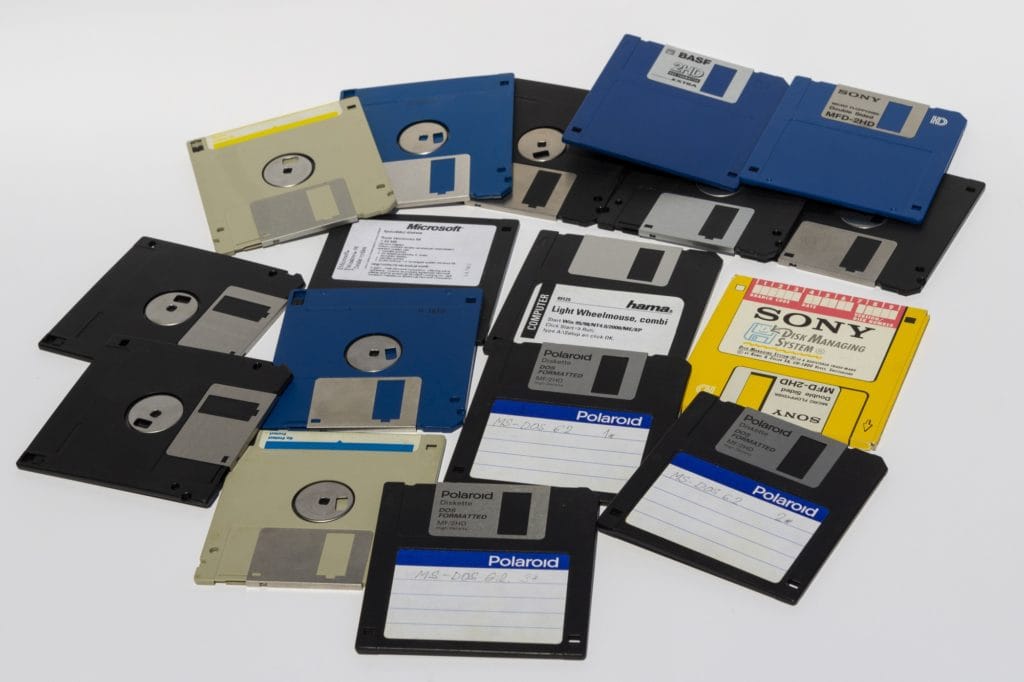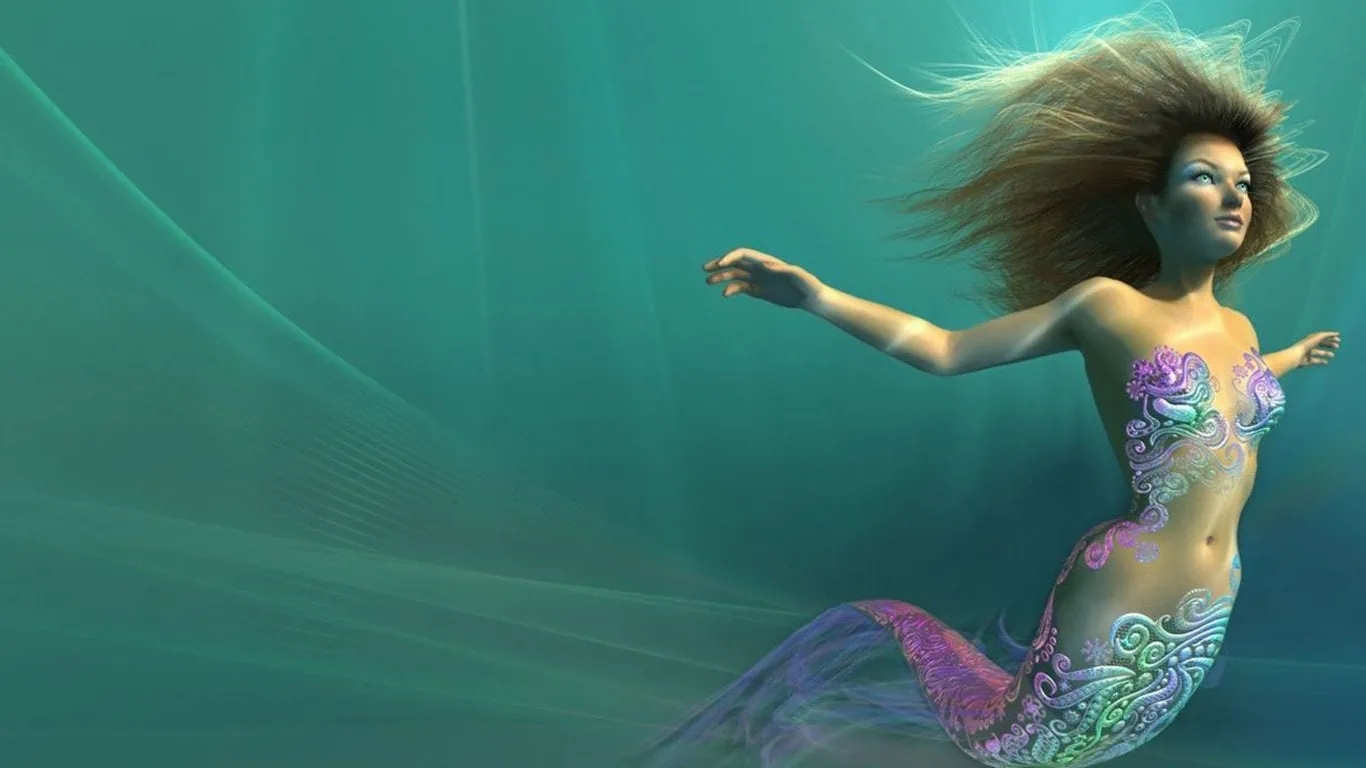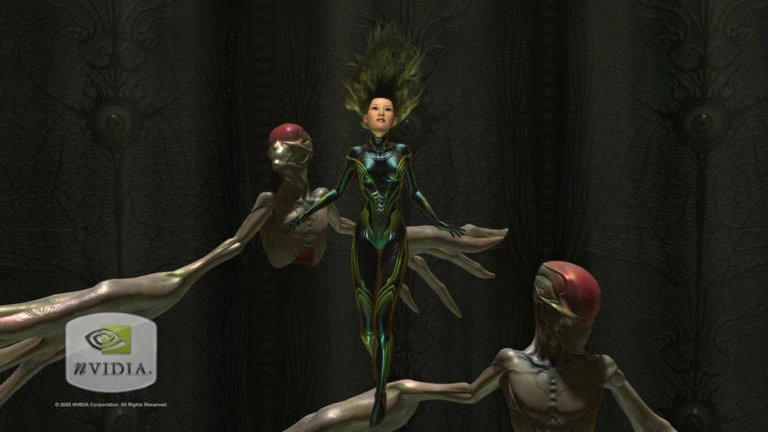The Lost Art of Tech Demos In Marketing
Remember tech demos from back in the old days? Chip makers would release these small 3D programs to show off their new graphics chips.
These were some of the most well-known pieces of PC gaming software back in the day, and they make people feel nostalgic when they think about old hardware. In some cases, they were almost mascots for each generation of graphics cards.
They were used on the box art, manuals, stickers on fan shrouds, and many marketing and presentation slides that graphics chip companies showed internally and to the public. In many ways, they were brief glimpses into what the future of gaming would look like, many of which are not fully realized yet.
Why did they become so well-known back then? Why did they disappear, and what were they used for? In the following article, we’ll go over the history of Tech Demos, where it first started, some of the highlights over the past 20 years, and what has become of them today.
When Tech Demos First Started Becoming Popularized
The demo scene was the birthplace of many technological demonstrations. Demos were created by hackers and programmers for 8-bit and 16-bit home computers in the 1980s and 1990s.

This was ongoing and has produced some remarkable outcomes so far. Looking back even further, you can find events like Siggraph, where Pixar and other computer graphics giants made their names by showcasing what computers could do visually.
Demo floppy disks often lined the checkout counters at your local computer hardware store or in specially marked boxes at computer swap meets. As a kid, I couldn’t help but take everyone that I saw, both because I couldn’t wait to try them out and also because it had the bonus of being a free floppy disk.
GPUs Begin Entering the Tech Demo Scene
Manufacturers of graphics processing units (GPUs) have unveiled live demonstrations of their products’ most cutting-edge rendering capabilities and graphical quality. These methods were typically the only ones available for thoroughly testing a new graphics card or just observing its maximized capabilities.
This was because developers frequently implement new elements in subsequent releases. Games that could run smoothly on your graphics card usually looked inferior to the tech demos.
In the time it takes to develop the features of a chip, a more efficient technology demonstration could be built.
Since they lacked the essential components of an interactive game, they performed better than anything else available.
As a result, consumers were given an inaccurate impression of the graphics chip’s real-world capabilities but an accurate impression of its potential, and often potential was enough to convince us that we had to have it.
Looking back at 20 years of GPU Tech Demos
Let’s look back at 20 years’ worth of consumer desktop graphics card technology and review some of the highlights. Obviously, I won’t be able to include everything that deserves to be mentioned, so if you think I missed any essentials readers should know about, please let me know in the comments.
In the 90s, some of the biggest graphics card chipset manufacturers were ATI Technologies (now part of AMD), 3dfx Interactive, Nvidia, S3 Graphics, Trident, Hercules, Orchid, and Matrox Graphics.
These companies were known for producing high-performance graphics chips and cards that pushed the boundaries of PC gaming and visual computing.
That era was perhaps the peak of graphics card competition. With this many chip manufacturers at the time, there were nearly 3 times as many AIB (add-in-board) partners from Diamond to Creative Labs.
In 1996, the demand for 3D acceleration grew, and it was around that time that 3DFX was founded by former employees of SGI and other major technology firms. They aimed to make a single, low-cost graphics card capable of producing images on par with those found in workstations.
The First Popular GPU Tech Demos Of The 90s
It’s not surprising, given how much they had to prove. Valley of Ra was the name of one of the most popular demonstrations. One of the few playable tech demos, it displayed what a fighting game on their new Voodoo chipset might look like.
The keyboard could be used in a battle between two players. It was more of a proof of concept or show-of-concept than anything else, but the state-of-the-art visuals of the day proved that what 3DFX had in mind was indeed feasible.
The portrayal of Anubis stood out the most. The reflection maps applied to him gave him a glossy appearance previously only seen in offline renderings, such as movies and commercials. Their goal was to demonstrate that Voodoo was competitive with SGI’s reality engine despite being much more affordable.
As a side note, when Nvidia introduced the first generation of RTX graphics cards, they also created a cinematic demo showing ray-traced reflections on Star Wars characters which, of course, is miles ahead of what was achievable back with the 3DFX Voodoo card, however as simple and chonky as the mirrored skin of Anubis was, we already saw from that tiny glimpse what the potential for reflections would eventually be able to achieve. See the demo here.
At the time, 3DFX heavily utilized technology demonstrations such as this one to showcase their initial 3D architecture to everyone from consumers to game developers to investors.
This game was a prototype of a potential racing game. This demonstration was one of a kind because it could compare software rendering to hardware rendering side by side.
Click to view the 3dFX Voodoo Racer Demo.
Only a fraction of the demos developed by 3DFX to showcase their Voodoo series of graphics cards were made public. By the time the public saw them, many of these demonstrations had been lost. You can use the keyboard to navigate through the various rooms of Wizards Tower, each of which is illuminated in a different color.
It was clear that 3DFX was shaking things up, and it wasn’t solely because of their technology. The leadership at 3DFX also had a keen understanding of gamers and how to market to them, which included branding, marketing, and packaging. The tech demos were just the icing on the cake.
However, 3DFX was not the only game in town. The Vérité 1000, Renditions’s first accelerator, also made waves when it debuted that year which used OpenGL to demonstrate the first working example of what would become known as “cell shading” in real-time.
Late 90s GPU Tech Demo
ATI also released an early demo in 1997 called Knight. To date, this was ATI’s oldest available technology demo. For the early 3D rage series of accelerators, ATI developed a proprietary API known as ATI 3D C interface or CIF for short. This demo uses CIF features to demonstrate alpha shadows and blending for the statue’s clothing, as well as single-pass texture compositing, which brings the statue to life.
Click to view the ATI Knight Demo.
When ATI released the Rage 128 Series in 1998, it revolutionized the graphics industry. Additionally, the Rage Dawning demo was released by the Future Mark team at 3D Forge. This was the first demo I’ve seen with music, and it was a big improvement over the last one.
The demo displayed an orb of light that travels through a canyon, illuminating the landscape in real-time alongside a reflective river and a number of particle effects. It travels to an Egyptian temple, seemingly reawakening an ancient Egyptian warrior, accompanied by many visual effects.
3DFX continued to demonstrate the capabilities of the Voodoo 2 line with impressive demonstrations. Again, not many of the more impressive demos survive today, leaving us with more basic examples of a single effect.
Matrox, however, entered the high-end gaming market with their G400 series cards before the end of the ’90s. These cards were used in the most impressive technology demonstration of that decade, showcasing the latest in environment map bump mapping.
The effect was used to add realism to the water’s surface, and the demo also features colored lighting, a large number of particles, and dynamic shadows.
The first GeForce was introduced by Nvidia in 1999. Despite being the most powerful graphics card of the year, the demonstrations created for it were relatively straightforward and focused on just one or two effects at a time, such as the grass demo’s complex geometry or the bubble demo’s neat cube-mapped effect.
However, the inclusion of music in this demonstration of the crystal ball has increased its appeal. Cube mapping and a lot of geometry work together to let you zoom in from the outside and see the crystal ball’s detailed castle inside for the first time.
Click to view the GeForce 256 Grass demo.
Click to view the GeForce 256 Bubble demo.
It was also the first demo to feature a menu where users could toggle between different animation and rendering modes and adjust various settings. A staple of NVIDIA’s presentations for the foreseeable future.
Early 2000s GPU Tech Demos
In 2000, NVIDIA wowed audiences with demonstrations of the GeForce 2 series. Compared to the GeForce 256 from the previous year, the GeForce 2 series didn’t change much, but it was faster and had more potential applications.
Simple demonstrations such as Grove demonstrated hardware and transformer lighting, and this lightning demo demonstrated per-pixel illumination, which were some really neat features for the period. Extensive geometry, stunning lighting and texturing effects, etc.
The Voodoo 5 5500 was 3DFX’s newest and possibly final piece of hardware. There was a lot of room for innovation in the T-Buffer to display things like depth of field and motion blur. The “Rocket Burger” demo featured a scene with speeding flying cars. T-Buffer technology’s main selling point was the inclusion of motion blur depth of field and antialiasing.
Although it lacks music and sound effects, it was one of the more impressive technical demonstrations of 3DFX.
The Voodoo 5 5500 was 3DFX’s newest and possibly final piece of hardware. There was a lot of room for innovation in the T-Buffer to display things like depth of field and motion blur. The “Rocket Burger” demo featured a scene with speeding flying cars. T-Buffer technology’s main selling point was the inclusion of motion blur depth of field and antialiasing.
Although it lacks music and sound effects, it was one of the more impressive technical demonstrations of 3DFX.
ATI’s Radeon’s Ark demo from 2000 showcased the capabilities of their new Radeon series of graphics cards, and I believe it single-handedly blew the competition out of the water. The demo’s floors featured environment-mapped bump mapping and other cutting-edge effects that surpass Matrox’s implementation of similar techniques.
There was a female character with complex geometry and a name you may recognize, as well as detailed textures, reflections, water effects, light maps, and more. This would be the first introduction to ATI’s mascot, aptly named Ruby.
ATI’s Radeon’s Ark demo from 2000 showcased the capabilities of their new Radeon series of graphics cards, and I believe it single-handedly blew the competition out of the water. The demo’s floors featured environment-mapped bump mapping and other cutting-edge effects that surpass Matrox’s implementation of similar techniques.
There was a female character with complex geometry and a name you may recognize, as well as detailed textures, reflections, water effects, light maps, and more. This would be the first introduction to ATI’s mascot, aptly named Ruby.
In 2001, NVIDIA’s GeForce 3 graphics cards also allowed for the use of Programmable Shaders. The effects we’ve seen up until now have all been hard-coded into the graphics chip.
However, programmable shading assured us that coders could configure their effects with the help of a brand-new language called HLSL, short for “High-Level Shader Language.” These Nvidia tech demos gave gamers their first look at the new technology.
The Zoltar demo wasn’t particularly complex, but it did feature state-of-the-art character rendering and a treasure trove of humorous asides accessible via a hidden gem.
However, the Chameleon demo was the one shown most frequently to demonstrate the capabilities of the GeForce 3. Even though the presentation wasn’t particularly complex, the variety of shading techniques demonstrated was impressive.
The chameleon’s transparency was the most impressive effect as it walked along the branch. Even Nvidia used it as their benchmark test of pixel shading image quality too.
With the release of the Radeon 8500, ATI announced that this year would feature the largest number of technology demonstrations for the new programmable architecture in the company’s history.
The first was a demo of the natural world, which was serene and uncomplicated but still managed to impress with its environment geometry data and beautiful water reflections and refractions in the stream.
Then there’s Rachel, apparently ATI’s response to Zaire. Even though it looks more realistic than Zaire, it lacks the charisma of the former.
And lastly, there were ATI’s island demos, which featured a plethora of visual flourishes, such as dynamic shadows, normal maps, shaded surfaces, reflections, and refractions in water.
Click to view the ATI Radeon 8500 Island 1 demo.
Click to view the ATI Radeon 8500 Island 2 demo.
In 2002, Nvidia released the GeForce 4 Series. To a large extent, it was just an enhanced version of the GeForce 3 Series. So while it may not have had significantly better features, it had significantly more power to display them properly.
Nvidia tech demos featured a new set of demonstrations to highlight this, and a few of them are particularly impressive.
The Tidepool demo may not seem like much. Still, it did create some interesting water effects along with an alternate known as the Werewolf demo, in which a werewolf just walks slowly.
Sometimes people running or stomping down the narrow street would run into him, causing him to howl or scratch. However, the fur effects, in this case, are cutting-edge, and they consumed every available GPU core during development.
The squid demo was also particularly interesting because it featured a shiny, complex robot squid that swam along a seaweed bed, changing colors and morphing into surreal shapes. Even now, this level of complex real-time character rendering for a home computer looks fantastic.
Click to view the GeForce 4 Ti Squid demo.
Matrox’s Parhelia 512 cards were their final foray into the personal computer gaming market that year. These cards did have some cool extras in terms of rendering technology. There wasn’t much to show that their product was superior. Nonetheless, they did demonstrate the new architecture with a demo called Parhelia Reef.
Later that year, however, ATI would unveil the Radeon 9700 Pro, arguably the decade’s most ground-breaking graphics card. DirectX 9 was released alongside it, and with it came many new features that I couldn’t wait to see.
This one was fairly straightforward, but the lighting and fur shading in the one of a bear is far more intricate than anything seen on the werewolf. This artistic shading demonstration was not only visually superior to previous renderings done in a cell shading style but also significantly more complex.
Also, one of the earliest examples of HDR lighting was in this marble demo with a level of lighting that was the most photorealistic we’d ever seen.
However, the demonstration was the talk of the town, the 2001 Animusic 3D animation Pipe Dream. This demo wasn’t just an interesting twist on musical animation, but it was also something that previously could only be achieved through offline computing.
This sequence, found on track five of Animusic’s computer animation video album, was the group’s most well-known work. They even attempted to use atom processors to control a live recreation of Pipedream at the 2011 Intel Developer Forum.
Pipe Dream was a major inspiration for one of YouTube’s most popular videos, Winter Got’s Marble Machine, whose sequel had been developing for two years. ATI’s real-time rendition was merely a tribute to a well-known piece of art, but still, it was an impressive one nonetheless,.
In Comes The Era of GPU Mascots.
The first Nvidia tech demos that featured DirectX 9 products, on the GeForce FX series, were released that year, as were a number of noteworthy demonstrations. Despite Pipe Dream’s dominance, NVIDIA’s FX demos were impressive and could be among the best the company has ever produced. At least seven demonstrations are available, each boasts the highest quality visuals ever achieved by an FX GPU.
This was the introduction of Dawn, a cute fairy character with butterfly wings, which was also the most lifelike humanoid character we had seen in real-time. A large number of sliders allowed you to alter her facial expression, as well as other features.
Dawn’s sister Dusk was far more attractive. The background shadowing techniques in this demo were likely more complex, suggesting it was a more advanced example.
Finally, there’s Ogre, which, like Pipe Dream, attempts to replicate the experience of offline rendering based on a song created by Spell Craft Studio.
The movie The Ogre uses real-time Shadow maps and motion blur as part of an adaptive mesh system for skin shading.
Even more impressive was Toys, a demo in which two young boys act out a scene with their toys for the camera in an engaging demonstration. The camera’s depth of field effect made it look like a cheap, old lens, which was pretty cool to watch.
Last Chance Gas was another option; it features rich, subtle textures and shadows. To prove that the FX series could make live-action look like CGI, a demo like this was created.
Although it shares its name with the latest API, Vulcan, the final FX series demo does not use it. Instead, Vulcan depicts a dark elf blacksmith forging a weapon. Particle effects make him laugh when he encounters a firefly.
The demo’s lighting and moving fire textures were among the best at the time, quite possibly not until the most recent introduction of the Nvidia RTX series.
ATI planned to release a few more Radeon 9800 series demonstrations before the year was over, such as the clock screensaver. In contrast, the fur in this chimp demonstration looked even better than in the bear presentation.
Click to view the ATI Radeon 9800 Bear demo.
But the year 2004 would be a watershed moment. We need to get started with NVIDIA 6800 series demos like Clear Sailing.
Nalu was the one that stands out, and she has become an icon for NVIDIA’s GeForce 6 series and perhaps one of the many awe inspiring demos that truly provided a grand vision of what gaming and graphics would be capable of in the future.
It does make sense in a way, Nvidia tech demos used a character with long hair. It slowed it down through the use of water, which was a less computationally complex animation of that hair to demonstrate the NV 40 GPU’s raw geometry capabilities, and the result would look pretty real.
Timbury, the other series demo, was also a fun character and a good illustration of the advanced rendering techniques of the time, which were more akin to those found in 3D animated films.
Tech demonstrations for ATI’s X800 series for the same year aren’t as impressive. A large group of World War I Soldiers can be seen in one demo, while another demonstrates the the effective use of subsurface lighting.
Click to view the ATI Crowd demo.
Mid to Late 2000s GPU Tech Demos
Ruby was reintroduced with new life as a redheaded secret agent with an attitude like Laura Croft’s began with the Double Cross tech demo. While other tech demo characters might have served as mascots for a single series, ATI had officially adopted Ruby as their permanent mascot.
This was more than just a clever marketing ploy to promote the sale of ATI’s latest graphics processing units. This was the beginning of a new time and way of thinking for the company.
ATI released a sequel of sorts to their Refresh X850 series, dubbed Dangerous Curves. It was not as hard to understand as “double cross,” but the way it was rendered was just as intense, with a lot of depth of field and motion blur.
In 2005, enhancements to the GeForce six architecture would allow for the debut of the GeForce 7 series. Instead of a mermaid named Nalu, we have Luna, an anagram of the name. In this demo the character Luna is floating among some creepy creatures with enormous hands.
The real show stopper wasn’t Luna herself but the hands of these creatures which for the first real time lighting showed the realism that could be achieved with lighting skin which before then was just a solid object however, in this demo, we were able to see the realistic translucency of skins as light passed through it, showing the slight tinge of red that would be produced from the blood and the tiny details of veins showing through the layers underneath.
From a purely entertainment standpoint, I recall Mad Mod Mike being Nvidia and ATI’s best demo in quite some time. However, the GeForce 7 series now faced competition from a new generation of automobiles, and Ruby’s story continued in “The Assassin,”
The models haven’t changed much from the last demo, but the lighting was much more polished. The assassin was stunning in every way, and it was incredible to think that she was created in 2005 and shown in real time. In the X1000 series, another impressive-looking demo was presented, but it had a very different vibe.
The ambiance of The Toy Shop was second to none. A bluesy riff played in the background as the camera glided over a cityscape at night to reveal a storefront in the pouring rain.
The raindrops’ motion was generated procedurally and executed entirely on the GPU using a new PAX bump mapping technique. It was a level of environmental detail that was far more realistic than anything that had been seen before.
The last public demonstration of Ruby was shortly after AMD’s acquisition of ATI was with the HD 2000 series which was demonstrated with a game called “Wipe Out,” which made use of DirectX 10 features, or “128 morph” as ATI called it, to animate Ruby’s face using targets like crease maps for her eyebrows, eyes, mouth, and chin.
HDR lighting and advanced light scattering were used to create the effect of snow and ice and that would be the last time for a while that we would see Ruby again.
Demos of later AMD graphics cards, such as the HD 5800 series, were simplified in comparison. By the time we saw Ruby again in 2013, she had a totally new look and an even worse accent. CryEngine 3 requires a minimum of the R9 290 series of graphics processing units.
Nvidia tech demos could keep demonstrating technology in an animated presentation, but with much less fanfare. Another revolutionary product that more than doubled performance was the GeForce 8800 GTX, which followed the GeForce 7900 GTX.
There were prototype GeForce 8 series graphics cards. Using a photo that looked remarkably like model Adrienne Curry but otherwise didn’t do much, they followed the current trend of marketing sex appeal. In contrast, the human head demo’s impressive skin shading and lighting tech made it look even more lifelike.
The next demo was Froggy, which featured a pretty nice-looking environment, and featured some ways to interaction where you could hit, pull and stretch the frog in real-time. The shading on the skin looked fantastic.
Early 2010s GPU Tech Demos
However, Medusa was probably the last video demo to show a complete story. In the demonstration, sophisticated facial animation was accomplished with the help of blend shapes that are saved in texture buffers. Using geometry shaders, we can control the rate at which a stone expands. There wasn’t any other GTX 200 series demos besides this one.
The Rocket Sled demo made for the GTX 400 series was another well-liked demo, despite the fact that it lacked a story or gameplay. It used physics simulations to let the user alter the rocket sled’s settings and featured amusing animation. It also showed the incredible processing power of PhysX beyond any real application you would experience in a real game.
There was also a variant of Dawn called New Dawn and the Stone Giant DirectX 11 demo.
Perhaps the last few ones that still stand out today include the Nvidia tech demos for Aliens vs. Triangles and Endless City demo.
The Aliens vs. Triangles demo showed the use of displacement maps as damage layers showing dynamic levels of damage the alien would take while also healing itself layer by layer in real-time.
And in the Endless City demo, this Nvidia tech demo showed off for the first time the use of procedural rendering of a city that you could explore endlessly, a feature that is commonly used today.
What made these demos particularly unique was the presentation of the demo by the creators of the demo. Nvidia realized that playable tech demos were only most useful when they were being run on the latest hardware that they were designed to sell.
However, it was unlikely that the general consumer would have that hardware, so they relied on review sites and blogs to reproduce the demos for others to see. So to provide a middle ground, they create demos where you would watch an operator often the studio that created the demo show you the demo as it was being played on their systems.
This allowed them to show off the technology as it was intended to be shown while also proving without a doubt that all this stuff was happening in real time without movie magic.
However, GPU manufacturers haven’t released many groundbreaking demonstrations of their technology since 2012. Today tech demo are largely unplayable and are mostly just pre rendered cinematics.
Only recently with the launch of the first generation of RTX graphics card from Nvidia did we see a return of the real-time gameplay demo however it still remained something exclusive to Nvidia and this is due to in large part to the fact that they are based on real upcoming unreleased games which as you can imagine are not accessible to the public at large.
Demonstrations of new technologies seem to have run their course. Unfortunately, the best way to discover the capabilities of your new graphics card was to dive into some games. Sort of. Contrast playing a game with loading up a tech demo, sitting back, and watching the show.
If a game only rendered a single character, scene, or scripted sequence using all of the GPU’s newest features, you wouldn’t see what it could do because games are much more complex than tech demos.
However, with playable tech demos, you could catch a tiny glimpse of some graphics capability that still remained far beyond the capabilities of any game at the time.
More recently, some of the best tech demos we’ve seen to date were not even produced by the big GPU manufacturers but rather by 3rd parties or even fans.
Take for instance this this one created on the Unity engine called “Enemies” released in 2022 was among one of the best I’ve seen in a long while.
That has prompted NVIDA to bring back their in-house tech demos such as the most recently ones built on the Unreal Engine to feature their latest ray-tracing capabilities.
The focus of the rendering industry has shifted away from novel hardware features to raw processing power. The return of tech demos is still a fight I bring up today whenever I find myself at an NVIDIA or AMD Summit.
Maybe it’s just the boomer in me pining for some nostalgic relic of the past, but perhaps I’m not the only one that longs to see the magic of tech demos again. Demos can captivate my imagination by showing me, not just the latest games or those coming out in the next year but also what games should look and play like in 5 or even 10 years from now.
I want to thank PixelPipes, whose Youtube video of the same name, “The Lost Art of Tech Demos” took the time to create the detailed timeline from which most of the data in this article was derived. If it weren’t for his concise overview, I probably would have spent countless hours backtracking every single tech demo in existence.







